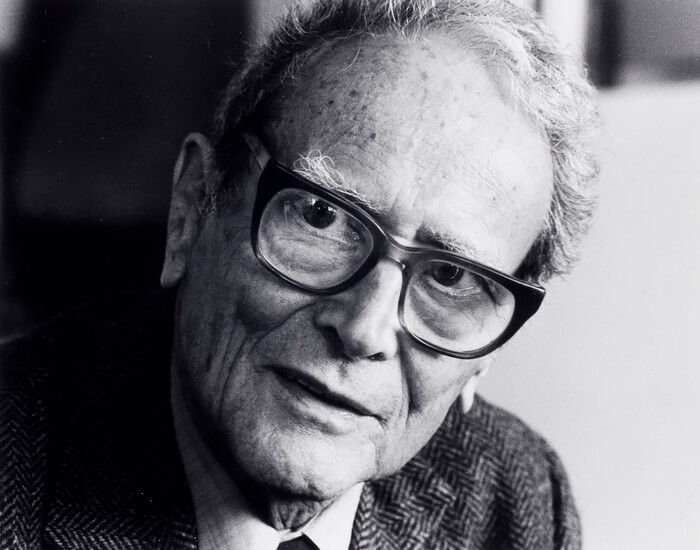Andreas Bernhard Lyonel Feininger (December 27, 1906 - February 18, 1999) was an American photographer and a writer on photographic technique. He was noted for his dynamic black-and-white scenes of Manhattan and for studies of the structures of natural objects.
Feininger was born in Paris, France, the eldest son of Julia Berg, a German Jew, and the American painter and art educator Lyonel Feininger (1871-1956). His paternal grandparents were the German violinist Karl Feininger (1844-1922) and the American singer Elizabeth Feininger, (née Lutz), who was also of German descent. His younger brother was the painter and photographer T. Lux Feininger (1910-2011).
In 1908 the Feininger family moved to Berlin, and in 1919 to Weimar, where Lyonel Feininger took up the post of Master of the Printing Workshop at the newly formed Bauhaus art school.
Andreas left school at 16, in 1922, to study at the Bauhaus; he graduated as a cabinetmaker in April 1925. After that he studied architecture, initially at the Staatliche Bauschule Weimar (State Architectural College, Weimar) and later at the Staatliche Bauschule Zerbst. (Zerbst is a city in the German state of Saxony-Anhalt, about 20 km from Dessau, where the Bauhaus moved to in 1926.) The Feininger family moved to Dessau with the Bauhaus. In addition to continuing his architectural studies in Zerbst, Andreas developed an interest in photography and was given guidance by neighbour and Bauhaus teacher László Moholy-Nagy.
In 1936, he gave up architecture and moved to Sweden, where he focused on photography. In advance of World War II, in 1939, Feininger immigrated to the U.S. where he established himself as a freelance photographer. In 1943 he joined the staff of Life magazine, an association that lasted until 1962.
Feininger became famous for his photographs of New York. Other frequent subjects among his works were science and nature, as seen in bones, shells, plants, and minerals in the images of which he often stressed their structure. Rarely did he photograph people or make portraits.
Feininger wrote comprehensive manuals about photography, of which the best known is The Complete Photographer. In the introduction to one of Feininger's books of photographs, Ralph Hattersley, the editor of the photography journal Infinity, described him as "one of the great architects who helped create photography as we know it today." In 1966, the American Society of Media Photographers (ASMP) awarded Feininger its highest distinction, the Robert Leavitt Award. In 1991, the International Center of Photography awarded Feininger the Infinity Lifetime Achievement Award.
Today, Feininger's photographs are in the permanent collections of the Center for Creative Photography, the Museum of Modern Art, the Metropolitan Museum of Art, the National Gallery of Art, London's Victoria and Albert Museum, and the George Eastman House in Rochester, New York.
Source: Wikipedia
